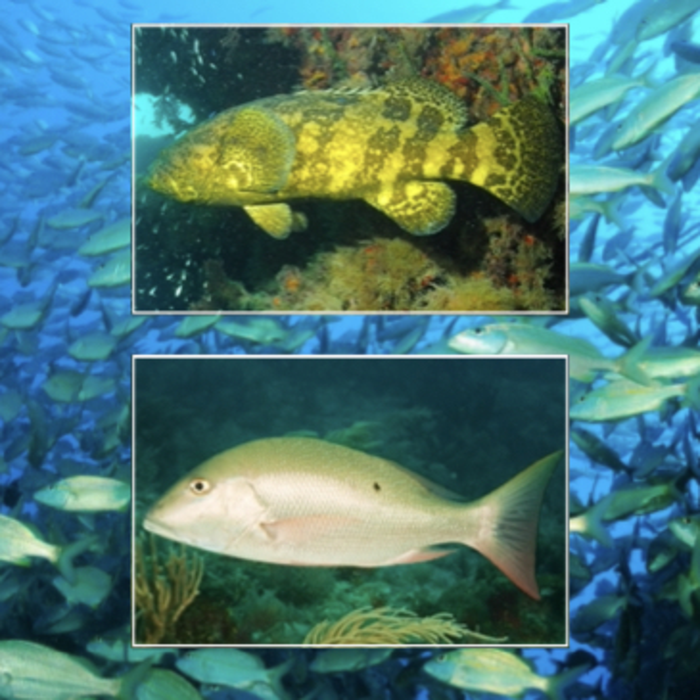A new study led by scientists at the University of Miami (UM) Rosenstiel School of Marine and Atmospheric Science found concrete evidence that more than 85 percent of the grouper and snapper studied are overfished as a direct result of increasing human demand for seafood.

Credit: Jiangang Luo
A new study led by scientists at the University of Miami (UM) Rosenstiel School of Marine and Atmospheric Science found concrete evidence that more than 85 percent of the grouper and snapper studied are overfished as a direct result of increasing human demand for seafood.
The research team analyzed 30 years of population data for 15 coral reef fish species central to South Florida’s commercial and recreational fisheries using their length-based risk analysis (LBRA) framework.
They found that three out of the five grouper species, all eight snapper species, and two grunts analyzed were below the 40 percent minimum spawning potential ratio, a regulation necessary to sustain fish populations.
For black grouper, by increasing the current minimum catch size from 24 inches (61 cm) to 44 inches (110 cm), the spawning population would grow to 40 percent, large enough to produce a meaningful number of new juveniles. It would take approximately 10 years for the population to recover to a point where it was minimally sustainable and 22 years to reach equilibrium where a sustainable catch becomes possible.
“The situation is analogous to your bank account,” said the study’s lead author Jerald Ault, professor of environmental science and policy at the UM Rosenstiel School. “That is, without a significant account balance, in this case fish in the water, you can’t get meaningful interest— significant numbers of large fish to catch, but also to spawn and replenish the reef.”
The study, “Length-based risk analysis of management options for the southern Florida USA multispecies coral reef fish fishery,” published in the journal Fisheries Research, provides a blueprint to effectively balance fishery production—how many fish are taken from the sea—to reduce overfishing and protect these valuable fish populations now and in the future.
The study was supported by the NOAA Southeast Fisheries Science Center & Coral Reef Conservation Program Grant No. NA20OAR4320064, National Park Service Natural Resource Conservation Assessment Program Grant No. P18AC01130-03, Florida RESTORE Act Center of Excellence Grant No. FIO‐4710112600B, Florida Power & Light Corporation Contract No. 2000347910, and the National Parks Conservation Association.
About the University of Miami
The University of Miami is a private research university and academic health system with a distinct geographic capacity to connect institutions, individuals, and ideas across the hemisphere and around the world. The University’s vibrant and diverse academic community comprises 12 schools and colleges serving more than 17,000 undergraduate and graduate students in more than 180 majors and programs. Located within one of the most dynamic and multicultural cities in the world, the University is building new bridges across geographic, cultural, and intellectual borders, bringing a passion for scholarly excellence, a spirit of innovation, a respect for including and elevating diverse voices, and a commitment to tackling the challenges facing our world. Founded in the 1940’s, the Rosenstiel School of Marine and Atmospheric Science has grown into one of the world’s premier marine and atmospheric research institutions. Offering dynamic interdisciplinary academics, the Rosenstiel School is dedicated to helping communities to better understand the planet, participating in the establishment of environmental policies, and aiding in the improvement of society and quality of life. www.rsmas.miami.edu.
Journal
Fisheries Research
DOI
10.1016/j.fishres.2021.106210
Method of Research
Observational study
Subject of Research
Animals
Article Title
Length-based risk analysis of management options for the southern Florida USA multispecies coral reef fish fishery
COI Statement
none




